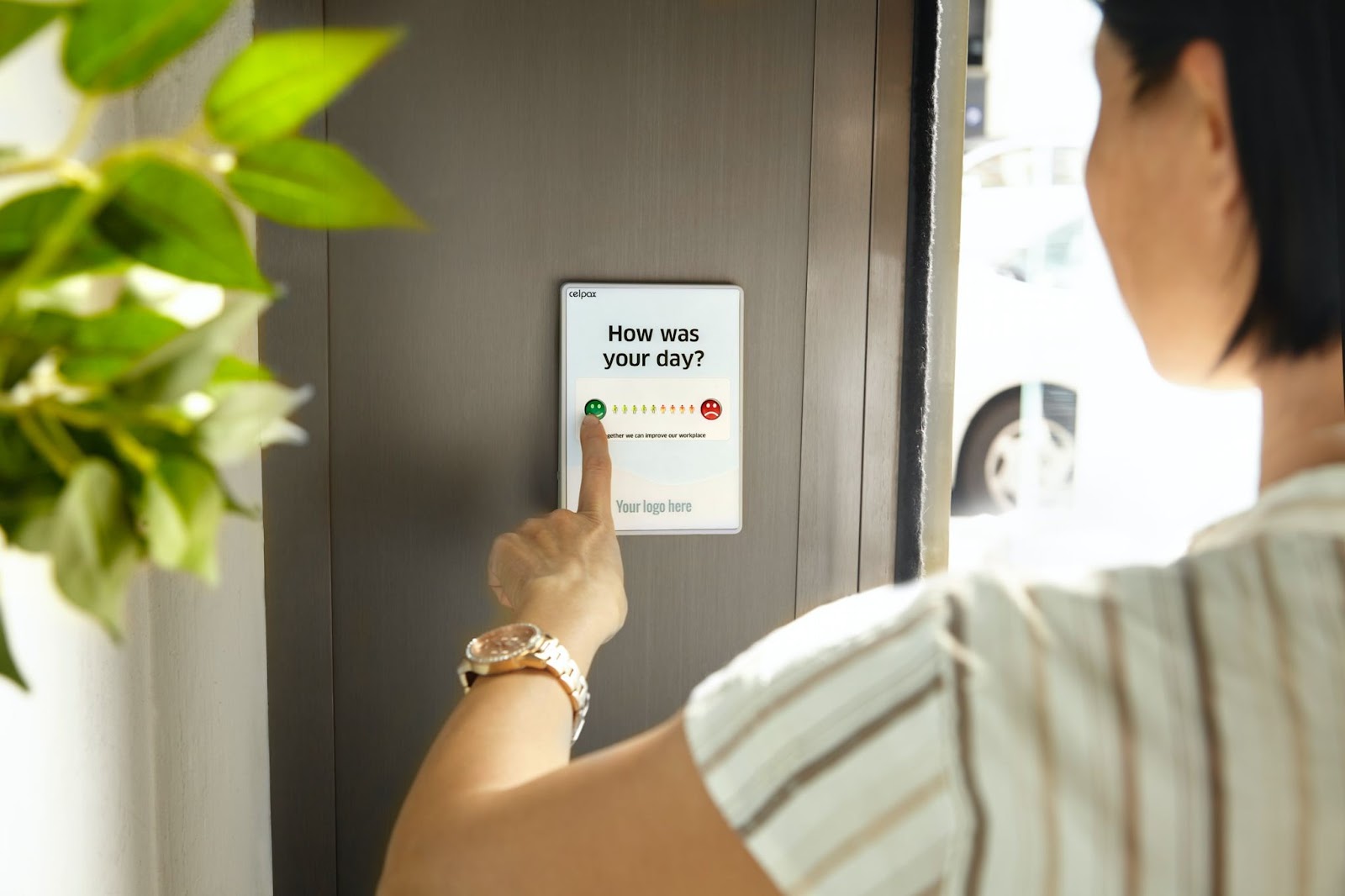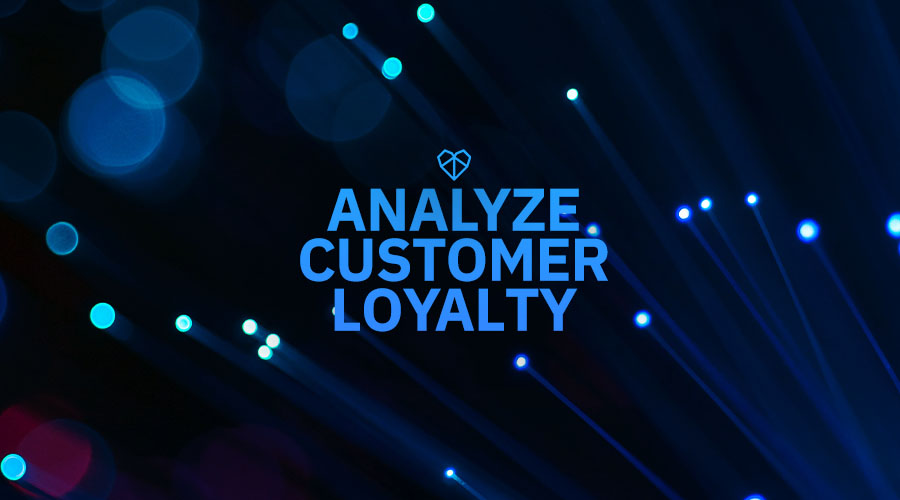NPS is a quick and easy customer satisfaction metric that you can use to evaluate your success and improve the user experience.
It's one of the top metrics you should be tracking for your business to understand customer loyalty and satisfaction, boost traffic and conversions, and push your company forward.
Here's why it's essential to know if your customers are sticking around and staying with you long-term:
Why should you pay attention to the Net Promoter Score?

Word of mouth is a potent marketing tool, with more than half of consumers saying it's important when making purchase decisions.
This is particularly true of this digital generation. In fact, a majority of customers trust the opinions of influencers more than businesses. So, influencer marketing is close to word of mouth marketing.
Also, customers are becoming more comfortable with online research. Consequently, your business can either be attracting or repelling prospective customers when they search for your product or service online.
Similarly, recommendations and disapproval from friends, family members, and colleagues have a significant impact since customers are likely to trust them.
When leveraging digital marketing, measuring customer satisfaction and loyalty is an important factor for your business to succeed. A Net Promoter Score (NPS) can help you track this.
What is a Net Promoter Score?
Customer satisfaction is a top metric you should measure as a business owner. Businesses, for example, use Net Promoter Score (NPS) to understand how likely their customers are to recommend their product or service.
An analysis of NPS provides essential insight into customer satisfaction and, with this information, you can make informed decisions on the types of marketing and customer service strategies you need to implement.
NPS focuses on customers' behaviors over time to understand why one customer might be dissatisfied.
The first version of NPS was released two years after Fred Reichheld studied surveys to establish a link between customer behavior and company loyalty.
His research revealed that the biggest issue with customer satisfaction and loyalty is whether a person feels confident in recommending a product to friends, family, and colleagues.
To give a strong endorsement, the person risks their reputation, so people only do that when they're delighted with the company being endorsed.
When businesses see this level of customer endorsement, it helps them grow their market share and increase profit. It also creates more loyal customers who can refer others to the business.
Why NPS matters and how to use it
The ability to improve customer retention is one of the most critical aspects of the NPS. This score has been proven to provide valuable assistance in strengthening brand loyalty and guaranteeing repeat purchases.
Running your marketing campaign through brand advocates is an excellent way to help spread the word about your product and build relationships with your consumers. They are free advocates of yours, so it's time to reward them too!
You'll want to maintain a positive relationship with your loyal customers - and it's not complicated. Start with simple gestures like reaching out and acknowledging their loyalty. Then consider discounts, coupons, bonuses, referral codes, and others.
The NPS also helps you better understand and connect with your detractors. It can help you change their opinions about your brand by understanding what's going on for them.
You can quickly see the areas in which to invest your business's time and money to maintain customer loyalty, turn negative feedback into positive updates, and increase your brand advocates.
How to calculate your Net Promoter Score

Marketers can ask people to rate how likely they would recommend their business to a friend or co-worker. This can be done with one question, using a scale of 0-10. (Yes, an NPS survey is as simple as that.)
Once you have asked about the Net Promoter Score, you can group respondents into different categories:
1. Promoters (score 9 to 10)
Promoters are customers that your company gains loyalty from - people who have gone beyond the cost of the product. They help to promote your products during their natural communication channels, like social media and word-of-mouth.
These customers offer free marketing to their friends and family, so they can be an extension of your marketing department.
2. Passives (score 7 to 8)
When your customers are passive, they neither rave about your business nor turn around to criticize it. As long as you're getting positive feedback from other buyers, you're doing just fine—and these passives could even become promoters.
3. Detractors (score 0 to 6)
These people are dissatisfied with your business and have less inclination to become repeat customers. This can contribute negatively to the brand's reputation since individuals who have a negative experience may share it publicly.
Now, you're ready to calculate your Net Promoter Score by subtracting the percentage of detractors from promoters.
The great thing about how short-duration this survey is is that it has a higher response rate than conventional surveys.
Besides your NPS, you can add metrics such as time on page, the average length of session, and bounce rate to your analysis. This allows you to better understand customers' behavior and decision-making patterns.
What is a good Net Promoter Score?

NPS scores can range from -100 to 100, and the higher the score, the better it is.
If we're talking about anything higher than zero, it's a step in the right direction. The fact that you’re not in negative integer territory demonstrates at least a certain degree of customer retention.
A score higher than 20 is considered favorable, while 50 is excellent. Anything 80 or higher is deemed to be world-class.
Moving on, NPS surveys represent how your customers feel about your company, and figuring out what yours indicates can be difficult.
First, a good rule of thumb is to make your sample size at least 20% of your overall target population.
So, if you had 100 members in your target audience, it might be wise to make a sample size of 20 or more members. The bigger, the better, and this is particularly true if you have limited clientele.
Your consumer location can also have a significant impact on your NPS. European clients are more conservative in their grading, while American counterparts give higher ratings more freely.
Some sectors—particularly those with complex customer relations (like collection agencies)—tend to score low on the NPS scale.
All in all, this benchmark can help you understand your position vis-à-vis your competitors. When competitors' NPS scores are unavailable, use your previous performance as your benchmark.
Any improvement in the score is an indicator of future growth. And, of course, the reverse hints at a decline in customer satisfaction, loyalty, and advocacy.
When should you conduct a Net Promoter Score survey?

The clarity of the NPS formula turned it into such a game-changer in the marketing world, and timing is crucial here. You want to reach customers after each significant activity they carry out.
By planning the entire user experience like this, you immediately capture the right and wrong aspects of the journey, focusing on the positive and negative pointers to refine your process.
Technology makes it easier than ever to attract customers promptly.
Some of the more popular channels for the NPS survey include email, instant messaging, text, in-app, and chatbots.
Use as many channels as possible to get as much feedback as possible.
Conclusion
Net Promoter Score is an important metric because it provides feedback to the company about how satisfied and loyal your customers are. This can help you to identify customer needs and improve your business overall.
